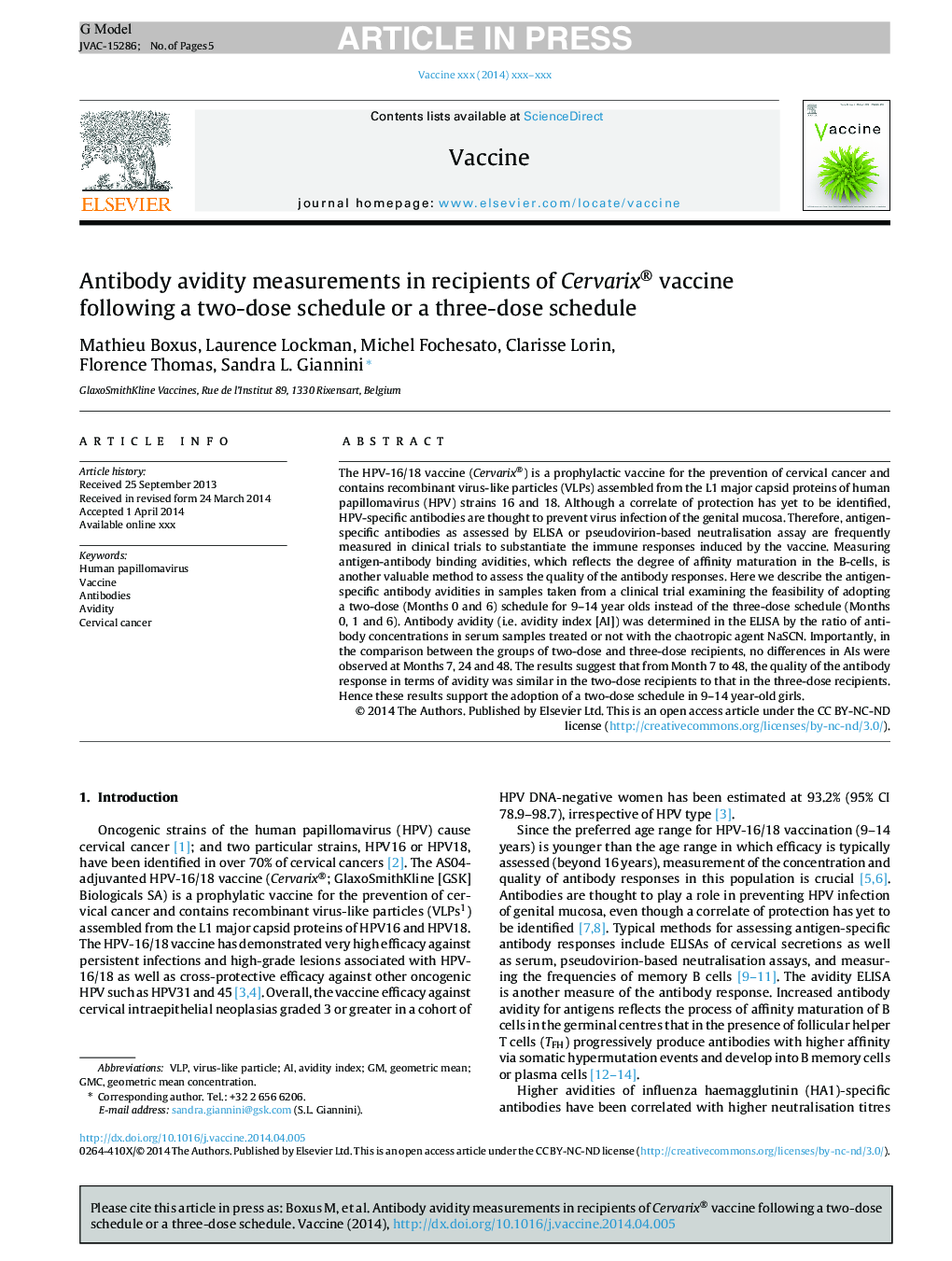| کد مقاله | کد نشریه | سال انتشار | مقاله انگلیسی | نسخه تمام متن |
|---|---|---|---|---|
| 10965016 | 1102732 | 2014 | 5 صفحه PDF | دانلود رایگان |
عنوان انگلیسی مقاله ISI
Antibody avidity measurements in recipients of Cervarix® vaccine following a two-dose schedule or a three-dose schedule
دانلود مقاله + سفارش ترجمه
دانلود مقاله ISI انگلیسی
رایگان برای ایرانیان
کلمات کلیدی
موضوعات مرتبط
علوم زیستی و بیوفناوری
ایمنی شناسی و میکروب شناسی
ایمونولوژی
پیش نمایش صفحه اول مقاله

چکیده انگلیسی
The HPV-16/18 vaccine (Cervarix®) is a prophylactic vaccine for the prevention of cervical cancer and contains recombinant virus-like particles (VLPs) assembled from the L1 major capsid proteins of human papillomavirus (HPV) strains 16 and 18. Although a correlate of protection has yet to be identified, HPV-specific antibodies are thought to prevent virus infection of the genital mucosa. Therefore, antigen-specific antibodies as assessed by ELISA or pseudovirion-based neutralisation assay are frequently measured in clinical trials to substantiate the immune responses induced by the vaccine. Measuring antigen-antibody binding avidities, which reflects the degree of affinity maturation in the B-cells, is another valuable method to assess the quality of the antibody responses. Here we describe the antigen-specific antibody avidities in samples taken from a clinical trial examining the feasibility of adopting a two-dose (Months 0 and 6) schedule for 9-14 year olds instead of the three-dose schedule (Months 0, 1 and 6). Antibody avidity (i.e. avidity index [AI]) was determined in the ELISA by the ratio of antibody concentrations in serum samples treated or not with the chaotropic agent NaSCN. Importantly, in the comparison between the groups of two-dose and three-dose recipients, no differences in AIs were observed at Months 7, 24 and 48. The results suggest that from Month 7 to 48, the quality of the antibody response in terms of avidity was similar in the two-dose recipients to that in the three-dose recipients. Hence these results support the adoption of a two-dose schedule in 9-14 year-old girls.
ناشر
Database: Elsevier - ScienceDirect (ساینس دایرکت)
Journal: Vaccine - Volume 32, Issue 26, 30 May 2014, Pages 3232-3236
Journal: Vaccine - Volume 32, Issue 26, 30 May 2014, Pages 3232-3236
نویسندگان
Mathieu Boxus, Laurence Lockman, Michel Fochesato, Clarisse Lorin, Florence Thomas, Sandra L. Giannini,